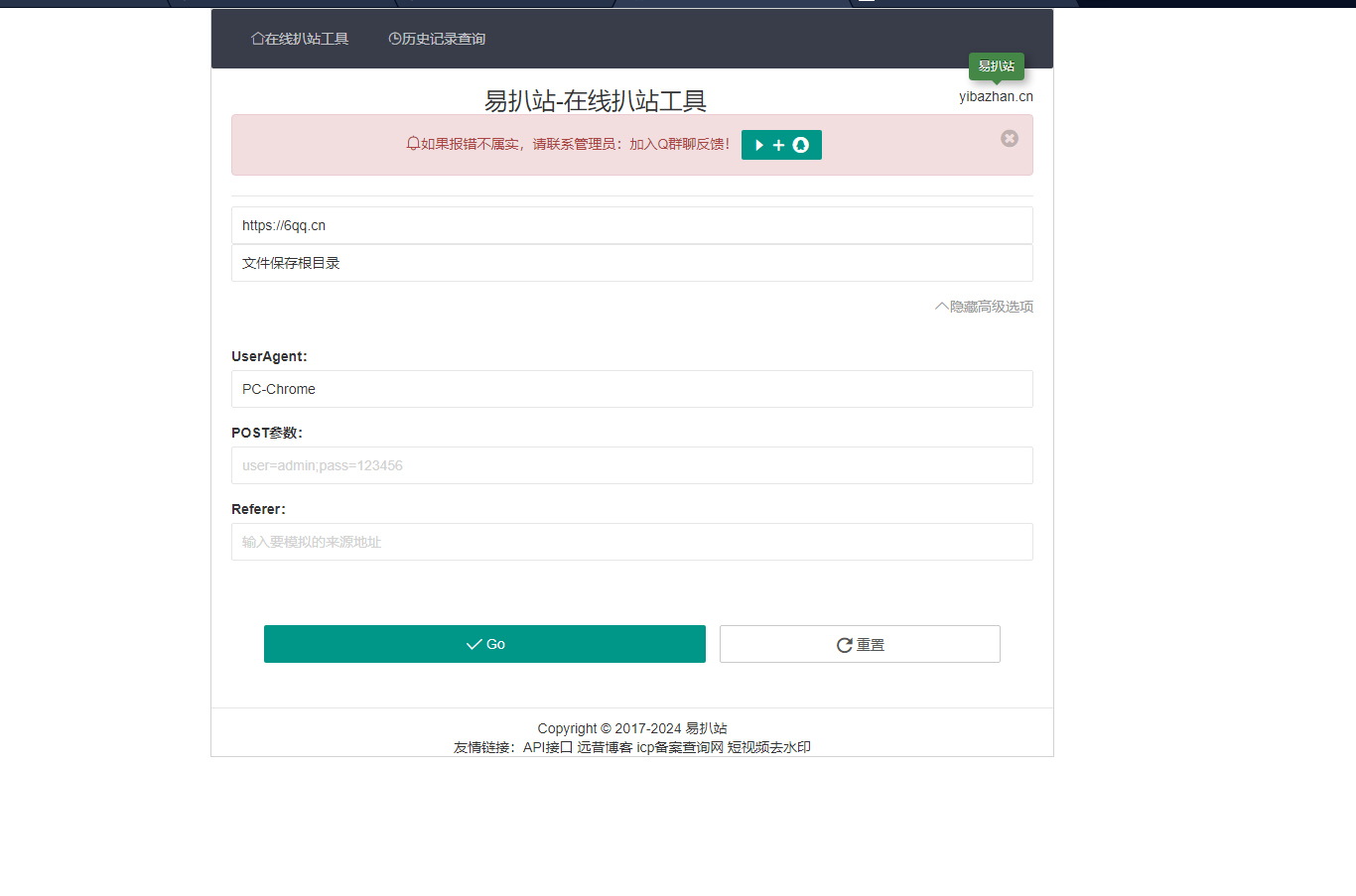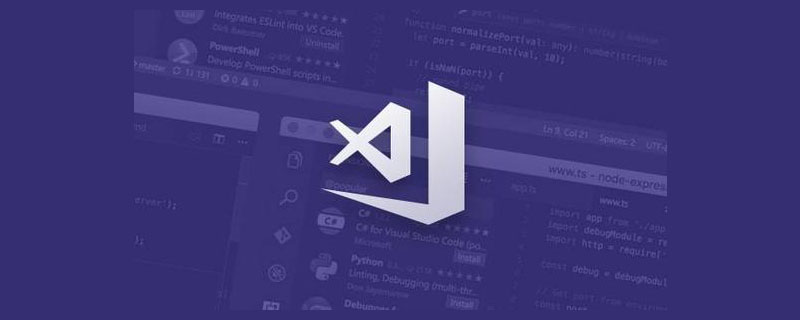本篇文章給大家分享一個(gè)vscode插件–power mode,編寫(xiě)代碼邊放煙花、編輯器還會(huì)抖動(dòng);一起來(lái)研究一下power mode插件實(shí)現(xiàn)煙花抖動(dòng)效果的原理,一起來(lái)看看吧!

最近一直在研究 vscode 插件,今天給大家一分享一個(gè)效果特別炫的插件,名字叫 power mode。

編寫(xiě)代碼邊放煙花、編輯器還會(huì)抖動(dòng)。
效果很炫,但是我們肯定不能滿足于會(huì)用,得研究下它是怎么實(shí)現(xiàn)的。
實(shí)現(xiàn)思路
在 vscode 里大家可能沒(méi)啥思路,但如果這個(gè)效果放到網(wǎng)頁(yè)里呢,文本改變的時(shí)候抖動(dòng)編輯器、然后再上面出現(xiàn)一些煙花效果。這個(gè)可能有的同學(xué)就有思路了。【推薦學(xué)習(xí):《vscode》】
抖動(dòng)編輯器:抖動(dòng)不也是個(gè)動(dòng)畫(huà)么,就是左右位移,這一秒右移,下一秒回到原位置,這樣就抖起來(lái)了。
煙花效果:不管啥花里胡哨的煙花,給個(gè) gif 我們就能搞定,就是在文本上方加一個(gè)元素,然后把 gif 放上去,下次加 gif 的時(shí)候把上次的刪除。
這樣就能在網(wǎng)頁(yè)里實(shí)現(xiàn)編輯器抖動(dòng) + 放煙花效果了。
把這個(gè)效果放到 vscode 里實(shí)現(xiàn)也是一樣的思路,因?yàn)?vscode 是基于 electron 實(shí)現(xiàn)的啊。
而 electron 又是基于 chromium + nodejs,也就是 ui 部分是網(wǎng)頁(yè)。我們可以在 vscode 幫助里打開(kāi)開(kāi)發(fā)者工具:

然后,可以看到,這編輯器部分就是個(gè) div 啊

所以剛才在網(wǎng)頁(yè)里實(shí)現(xiàn)的效果,可以放到 vscode 里實(shí)現(xiàn),思路一樣。
思路是一樣,但是具體怎么做呢?
這就需要了解下 vscode 的 extension api 了,其實(shí)也不難,我給大家介紹一下這里用到的 api:
首先,引入 vscode 包,所有的 api 都在這個(gè)包里。
import?*?as?vscode?from?'vscode';
然后,我們要給文本加樣式,怎么加呢?
在 vscode 的編輯器里面加樣式不是直接操作 dom 的,是受到限制的,要這樣幾步:
- 通過(guò) vscode.window 拿到當(dāng)前的 editor
const?activeEditor?=?vscode.window.activeTextEditor;
- 拿到當(dāng)前 editor 的正在編輯的位置
const?cursorposition?=?activeTextEditor.selection.active;
- 根據(jù)位置計(jì)算出要添加裝飾的范圍(range)
const?newRange?=?new?vscode.Range( ????cursorPosition.with(cursorPosition.line,?cursorPosition.character), ????cursorPosition.with(cursorPosition.line,?Math.max(0,?cursorPosition.character?+?delta)) );
- 創(chuàng)建裝飾對(duì)象
vscode.window.createTextEditorDecorationType({ ????before:?{ ????????contentText:'', ????????textDecoration:?`none;?${defaultCssString}${backgroundCssString}?${customCssString}`, ????}, ????textDecoration:?`none;?position:?relative;`, ????rangeBehavior:?vscode.DecorationRangeBehavior.ClosedClosed });
- 然后,給這段 range 的文本加裝飾
activeEditor.setDecorations(decoration,?[newRange]);
現(xiàn)在我們就在 vscode 編輯器里面,你正在編輯的位置,加上了一段樣式。
裝飾對(duì)象可以添加 before、after,這不就是偽元素么?沒(méi)錯(cuò),就是偽元素,而且還可以加一系列樣式呢。加啥樣式都可以。
到了這,是不是就有如何在編輯器里做那些效果的思路了呢?
接下來(lái),我們來(lái)看看 power-mode 的實(shí)現(xiàn)細(xì)節(jié)。
代碼實(shí)現(xiàn)
我們先從效果實(shí)現(xiàn)開(kāi)始看吧,主要是抖動(dòng)和放煙花:
抖動(dòng)
抖動(dòng)的原理我們分析過(guò)了,就是定時(shí)做位移。
首先,它定義了一系列的位移的裝飾對(duì)象,就是通過(guò) vscode.window.createTextEditorDecorationType 這個(gè)創(chuàng)建裝飾對(duì)象的 api:
public?activate?=?()?=>?{ ????this.dispose(); ????this.negativeX?=?vscode.window.createTextEditorDecorationType(<vscode.decorationrenderoptions>{ ????????textDecoration:?`none;?margin-left:?0px;` ????}); ????this.positiveX?=?vscode.window.createTextEditorDecorationType(<vscode.decorationrenderoptions>{ ????????textDecoration:?`none;?margin-left:?${this.config.shakeIntensity}px;` ????}); ????this.negativeY?=?vscode.window.createTextEditorDecorationType(<vscode.decorationrenderoptions>{ ????????textDecoration:?`none;?margin-top:?0px;` ????}); ????this.positiveY?=?vscode.window.createTextEditorDecorationType(<vscode.decorationrenderoptions>{ ????????textDecoration:?`none;?margin-top:?${this.config.shakeIntensity}px;` ????}); ????this.shakeDecorations?=?[ ????????this.negativeX, ????????this.positiveX, ????????this.negativeY, ????????this.positiveY ????]; }</vscode.decorationrenderoptions></vscode.decorationrenderoptions></vscode.decorationrenderoptions></vscode.decorationrenderoptions>
然后呢?就是定時(shí)讓 editor 抖起來(lái)啊:
也是根據(jù)編輯的 position 算出 range,然后給這段 range 加裝飾
private?shake?=?()?=>?{ ????if?(!this.config.enableShake)?{ ????????return; ????} ???//?當(dāng)前?editor ????const?activeEditor?=?vscode.window.activeTextEditor; ??//?要抖動(dòng)的?range,也就是當(dāng)前行 ????const?xRanges?=?[]; ????for?(let?i?=?0;?i??0.5)?{ ????????activeEditor.setDecorations(this.negativeX,?[]); ????????activeEditor.setDecorations(this.positiveX,?xRanges); ????}?else?{ ????????activeEditor.setDecorations(this.positiveX,?[]); ????????activeEditor.setDecorations(this.negativeX,?xRanges); ????} ????if?(Math.random()?>?0.5)?{ ????????activeEditor.setDecorations(this.negativeY,?[]); ????????activeEditor.setDecorations(this.positiveY,?this.fullRange); ????}?else?{ ????????activeEditor.setDecorations(this.positiveY,?[]); ????????activeEditor.setDecorations(this.negativeY,?this.fullRange); ????} ????clearTimeout(this.shakeTimeout); ????this.shakeTimeout?=?setTimeout(()?=>?{ ????????this.unshake(); ????},?1000); }
如上,就是定時(shí)加不同的位移樣式,隨機(jī)上下左右抖。
放煙花
然后我們來(lái)放煙花,思路我們分析過(guò)了,就是在編輯的位置加上一個(gè) gif,然后下次放的時(shí)候去掉上次的。
來(lái)按流程走一遍:
//?當(dāng)前編輯器 const?activeEditor?=?vscode.window.activeTextEditor; //?當(dāng)前編輯位置 const?cursorPosition?=?vscode.window.activeTextEditor.selection.active; //?要加裝飾的范圍 const?delta?=?left???-2?:?1; const?newRange?=?new?vscode.Range( ????cursorPosition.with(cursorPosition.line,?cursorPosition.character), ????cursorPosition.with(cursorPosition.line,?Math.max(0,?cursorPosition.character?+?delta)) ); //創(chuàng)建裝飾對(duì)象 const?decoration?=?vscode.window.createTextEditorDecorationType(<vscode.decorationrenderoptions>{ ????before:?{ ????????//?before?樣式 ????}, ????textDecoration:?`當(dāng)前元素樣式`, ????rangeBehavior:?vscode.DecorationRangeBehavior.ClosedClosed }); //?給該范圍加裝飾 activeEditor.setDecorations(decoration,?[newRange]);</vscode.decorationrenderoptions>
加裝飾的流程我們走完了,但是樣式還沒(méi)填,怎么加呢?
首先當(dāng)前元素要相對(duì)定位,然后加個(gè) before 偽元素,設(shè)置為絕對(duì)定位并且 left 和 top 為負(fù)數(shù)。
之后就是設(shè)置背景圖片了,power mode 提供了這么多 gif 可選。

所以呢,裝飾對(duì)象就是這樣的:
//?背景圖片的樣式 const?backgroundCss?=?this.getBackgroundCssSettings(explosionUrl); //位置的樣式 const?defaultCss?=?{ ????position:?'absolute', ????[CSS_LEFT]?:?`-10px`, ????[CSS_TOP]:?`-1.2rem`, ????width:?`${this.config.explosionSize}ch`, ????height:?`${this.config.explosionSize}rem`, ????display:?`inline-block`, ????['z-index']:?1, ????['pointer-events']:?'none', }; //?樣式對(duì)象轉(zhuǎn)換為字符串 const?backgroundCssString?=?this.objectToCssString(backgroundCss); const?defaultCssString?=?this.objectToCssString(defaultCss); const?customCssString?=?this.objectToCssString(this.config.customCss?||?{}); //?創(chuàng)建裝飾對(duì)象 const?decoration?=?vscode.window.createTextEditorDecorationType(<vscode.decorationrenderoptions>{ ????before:?{ ????????contentText:'', ????????textDecoration:?`none;?${defaultCssString}${backgroundCssString}?${customCssString}`, ????}, ????textDecoration:?`none;?position:?relative;`, ????rangeBehavior:?vscode.DecorationRangeBehavior.ClosedClosed });</vscode.decorationrenderoptions>
每次編輯都加一個(gè) gif 性能肯定很差,所以得做優(yōu)化,可以從觸發(fā)頻率、同時(shí)存在的 gif 數(shù)量來(lái)考慮:
- 節(jié)流,每1秒只能觸發(fā)一次

- gif 存在一段時(shí)間就刪掉

大功告成,這樣我們把抖動(dòng)和放煙花在 vscode 里面實(shí)現(xiàn)了一遍。
但是,還得加個(gè)觸發(fā)的入口。
什么時(shí)候觸發(fā)呢?涉及到兩個(gè) api:
- 編輯文本的時(shí)候,出現(xiàn)效果
vscode.workspace.onDidChangeTextDocument(onDidChangeTextDocument);
- 修改了插件配置的時(shí)候,重新設(shè)置插件對(duì)象
vscode.workspace.onDidChangeConfiguration(onDidChangeConfiguration);
從怎么觸發(fā)的,到觸發(fā)后干什么,我們都清楚了,接下來(lái)呢,還要會(huì)怎么注冊(cè)這個(gè)插件到 vscode 中。
插件注冊(cè)
注冊(cè)插件就是在 package.json 里面配置一下,指定觸發(fā)時(shí)機(jī):
"activationEvents":?[ ????"*" ]
指定插件入口:
??"main":?"./out/src/extension",
指定插件的配置:
"contributes":?{ ????"configuration":?{ ??????"title":?"Power?Mode", ??????"properties":?{ ????????"powermode.enabled":?{ ??????????"default":?false,?//?默認(rèn)值 ??????????"type":?"boolean",//?值類型 ??????????"description":?"Enable?to?activate?POWER?MODE!!!" ????????} ??????} ????} }
總結(jié)
vscode 基于 electron,而 electron 基于 chromium,所以還是用網(wǎng)頁(yè)來(lái)做 ui 的,那么很多網(wǎng)頁(yè)里面的效果,基本都可以在編輯器實(shí)現(xiàn)。
但是是受約束的,要熟悉整個(gè)加裝飾的流程:
- 拿到當(dāng)前編輯器 (activeEditor)
- 拿到當(dāng)前編輯的位置 (position)
- 算出要加裝飾的范圍 (range)
- 創(chuàng)建裝飾對(duì)象 (decorationType)
- 給那段范圍的文本加裝飾 (addDecoration)
抖動(dòng)和放煙花都是基于這個(gè) api 實(shí)現(xiàn)的,不過(guò)抖動(dòng)是做上下左右的隨機(jī)位移,放煙花是在編輯的位置加動(dòng)圖。
實(shí)現(xiàn)思路有了,還得指定觸發(fā)的入口,也就是文本編輯的時(shí)候(onDidChangeTextDocument)。還有配置改變也得做下處理(onDidChangeConfiguration)。
之后,注冊(cè)到 vscode 就可以了,在 package.json 里面配置入口(main)、生效事件(activeEvent)、配置項(xiàng)(contibutes.configuration)
希望這篇文章能夠幫你理清 vscode 里面一些編輯效果的實(shí)現(xiàn)思路。
兄弟萌,讓我們一起在 vscode 里面放煙花吧!

(插件名叫 vscode,感興趣可以體驗(yàn)一下,或者去看看源碼)。
原文地址:https://juejin.cn/post/6982416460723257352作者:zxg_神說(shuō)要有光
更多編程相關(guān)知識(shí),請(qǐng)?jiān)L問(wèn):vscode!!
.jpg)
















.png)
